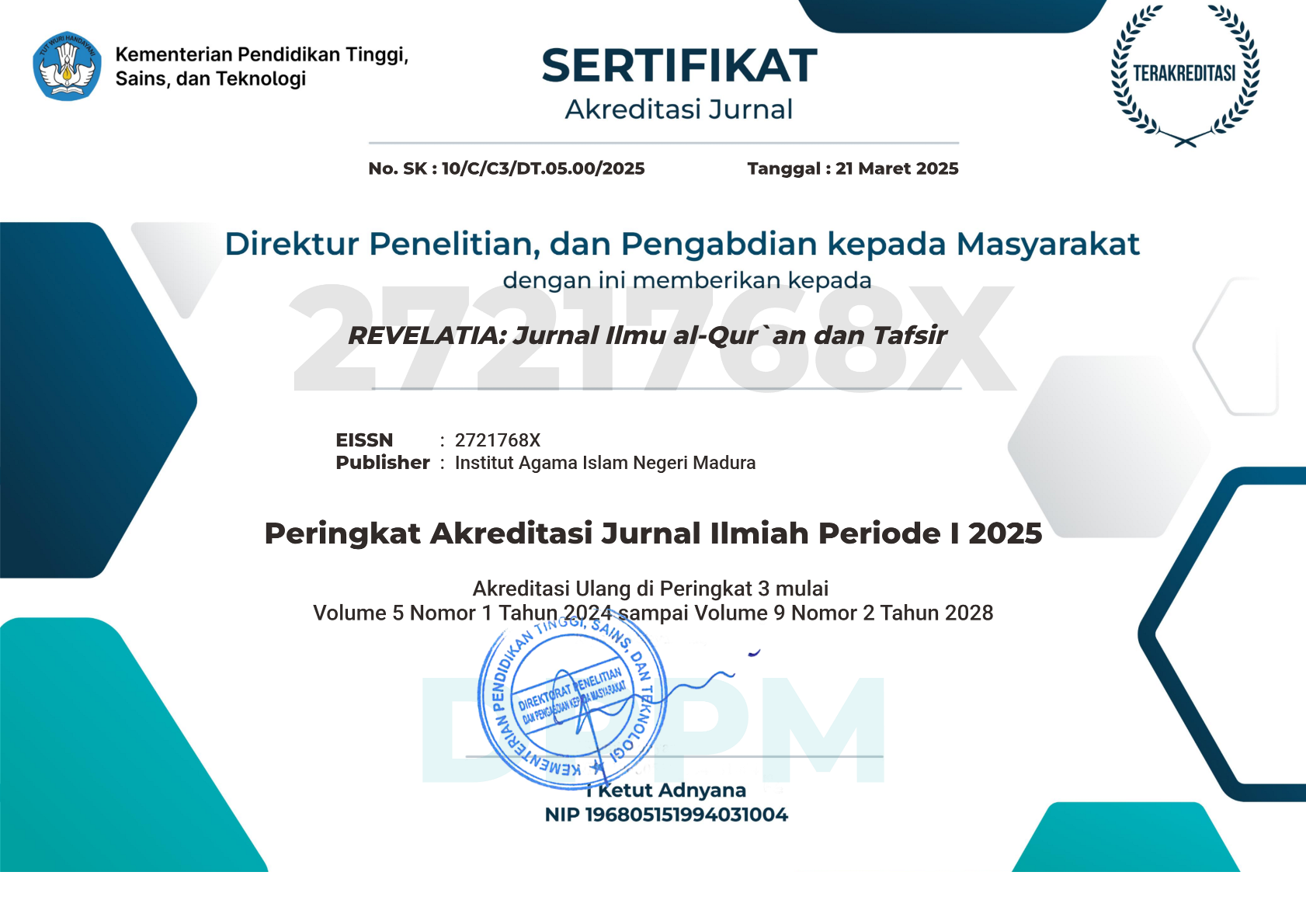.. :: ADDITIONAL MENU :: ..
INDEXING AND ABSTRACTING

Articles written for the REVELATIA Journal include scientific papers On the boundary of Quranic studies, interpretation on Quran, living Quran, contemporary thought of Quran, results of library and field research on Quran, book review.
The following are the provisions on article writing in REVELATIA Journal. That is:
Manuscript Preparation Guidelines
Structure of the manuscripts
The results and discussion in the article is intended to: (1) answer the problem novels and research questions; and (2) show how these findings are obtained; (3) interpret/ interpreting acquired findings; (4) link research findings with mapped knowledge structures; and (5) generate new theories or modifications of existing theories.
Table, picture, or graph writing is placed in the middle. By forming the number and title of the image, table, or graph. Seven of these examples.
Writing the table does not display the entire table line enough at the top of the table head and the bottom of the table head, as well as the bottom line of the table.
Provisions for writing references alphabetically are adjusted to a predetermined format. Writing should use a reference management application such as Zotero. The writing format used refers to the Turabian Style format. Typing citations using Turabian Style is to write the full author's name, comma, italicized title, opening brackets, Publisher City, colon, Publisher Name, comma, year, closing brackets, period, page number, period.
.. :: ADDITIONAL MENU :: ..
INDEXING AND ABSTRACTING

